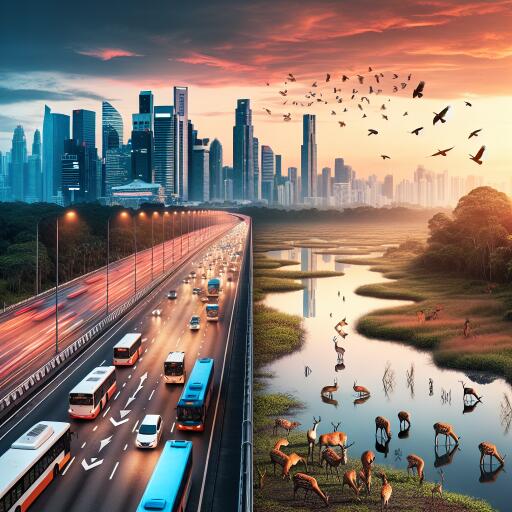
Wetlands: A Lifeline for Wildlife Amidst Urbanization and Deforestation
In the face of relentless urban growth and widespread deforestation, wildlife around the globe faces severe threats of extinction and loss of habitat. Amid these environmental challenges, wetlands shine as vital sanctuaries that harbor biodiversity and provide crucial ecosystems for various species. These naturally occurring and artificially created areas have become focal points in the effort to reverse the damage inflicted by human expansion and negligence.
The phenomenon of habitat destruction leaves an indelible mark on the diversity of life on our planet, jeopardizing not only animal and plant species but also human health and welfare. The destruction of habitats is a direct attack on biodiversity, leading to a reduced gene pool and a fragile ecosystem unable to withstand and adapt to changing environmental conditions. In response, conservation initiatives worldwide are turning towards the restoration and protection of wetlands as a strategy for ecological recovery and sustainability.
Wetlands serve as a critical backbone for environmental and human health. These ecosystems offer refuge and breeding grounds for wildlife, significantly improve water quality by filtering pollutants, prevent soil erosion, mitigate flooding, and contribute to groundwater replenishment. Recognizing these benefits, programs in states like Delaware have started to encourage landowners to engage in wetland conservation through financial incentives. The USDA Natural Resources Conservation Service Wetland Reserve Easement program is a prime example, providing both technical and financial support to landowners willing to restore and protect these critical habitats on their property. These incentives aim to make wetland easements a competitive option compared to other uses of the land, ensuring the preservation of wetland areas for future generations.
Moreover, the importance of establishing “green corridors” has become increasingly apparent. These corridors are essential for maintaining healthy wildlife populations, as they connect separate habitats and allow for animal migration, promoting genetic diversity and reducing the risks of inbreeding. In places like New Jersey, efforts to preserve freshwater wetlands through the Freshwater Wetlands Mitigation Council highlight the commitment to safeguarding these corridors, acknowledging their significant role in protecting communities from storm and flood damage while preserving biodiversity.
According to environmental experts, wetlands are capable of storing vast amounts of floodwater, thus offering a natural buffer against storm damage. It’s estimated that wetlands can absorb up to 1.5 million gallons of water per acre, delivering substantial economic benefits by saving billions in storm and flood damage annually. Despite these invaluable advantages, over half of U.S. wetlands have been drained or filled to facilitate development, underscoring the urgent need for enhanced legal protections and conservation efforts.
The journey toward environmental restoration and biodiversity conservation is fraught with challenges. Yet, the restoration and protection of wetlands represent a beacon of hope, demonstrating that through collective effort and commitment, the tides can be turned to ensure a sustainable and vibrant future for our planet’s diverse life forms. The creation and preservation of wetlands are not merely acts of environmental conservation; they are investments in a resilient and thriving world for future generations.





Leave a Reply